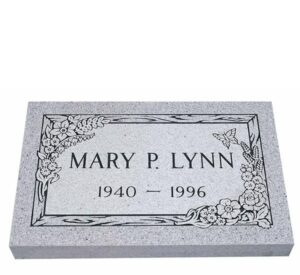Designed To Outlast Time
Granite headstones have provided many families with a beautiful way to capture and preserve the life of a lost loved one in, in a way that is both elegant and dignified. Granite headstones are perfect for a long-lasting memorial because granite, itself, is among the most durable natural materials that the Earth has to offer. Granite headstones, of course, are a specialty of today’s memorial industry. Granite headstones owe their popularity to the sturdiness of granite as a headstone material. Over the centuries, granite has long been known as Earth’s most elegant natural stone and it, accordingly, has been used to build – aside from countless numbers of granite headstones, of course – many of the world’s most elegant structures. Artists and architects of most of the world’s most storied cultures (the Ancient Greeks, Romans, and even Egyptians, just to name a few) have used granite in their timeless creations. Granite headstones, therefore, are perfect because of this historical connection to just about everything human. Their classic, long-lasting construction make granite memorial gravemarkers perfect for memorializing loved-ones for generations to come.

Besides being elegant and beautiful, granite is one of the hardest natural materials in the world, and is naturally available in an amazing pallete of colors. Granite is an igneous stone that has its origins from the very core of the Earth, having been formed millions of years ago from cooled, molten lava. Granite stone is a composition of different rocks (or minerals), such as feldspar, quartz, and mica. The different minerals begin deep within the Earth’s crust, where they are basically melted together due to the heat of the mantle below the crust (or even lava ‘plums’, or other phenomena where these minerals are in close proximity to the hot lava in the Earth’s crust). As the stone cools, it creates a crystaline structure that is visible to the naked eye, and which is also what gives granite it’s famous ‘grainy’ look. (It is interesting to note that the name ‘granite’ comes from the Latin word granum, which translates to ‘a grain’ – it goes without saying that it is not hard to figure out how this tough material came about it’s widely known title.) In any case, the result of this arduous natural process is a stone that is as tough and durable as it is gorgeous.
As granite is cooled over the centuries, the lava settled into granite “quarries” in various parts of the world. It is from these quaries that workers pull large blocks of granite using a variety of techniques, which range from drilling, to blasting and sawing. Once the granite blocks are pulled, they are then sent to factories where they are shaped, cleaned and polished for any number of applications, including, of course, the creation of granite headstones.
To make granite headstones, factory workers first cut down to size the large blocks of stone that come from granite quarries. They then polish the granite headstones so they will be suitable for engraving. Once the granite headstones are polished, the workers apply an adhesive backed rubber stencil. Carvers then use this stencil as a guide to engrave words and other designs into the granite headstones. Whereas the stencils were once drawn and cut, mostly, by hand, companies today use sophisticated machines to make sure the stencils translate into accurate engravings on the granite headstones.

Once the stencil has been applied, the engraving (also known as carving) is done in a special sandblasting room. In this room, workers use a high-pressure air hose to trace the stencil into the granite headstones. Once a stencil is carved into a headstone, the engravers fill in the crevasses with black so that the lettering stands out on the granite headstones. The uncut portion of the stencil is then removed, and the granite headstones are ready to be shipped.
As we mentioned before, granite is available in a number of different colors, and many often wonder if a certain type of granite is better for their memorial. Although there are many different qualities of granite, for the purpose of making gravemarkers, the granite utilized is pretty much all around the same basic strength and durability. It is true that one building a larger structure (especially if said structure is a bridge or buidling) they would need to be wary of the compressive strength, modules of rupture, bulk density, and absorbtion, among other things. This is because these structures will be either housing or supporting a number of people at any given time, and the engineers behind the structure must be sure that the material is durable enough to withstand any test. While that is true, granite used for grave markers is pre-selected to meet the standard requirements of the memorial industry. This allows families to make their decision based off their taste, rather than their needs, and often, the selection of a granite comes down to what color is appropriate to suite an individual’s personality, more than anything else.
